Instruments Vocals Role Singer | Name Lena Horne Years active 1933–2000 | |
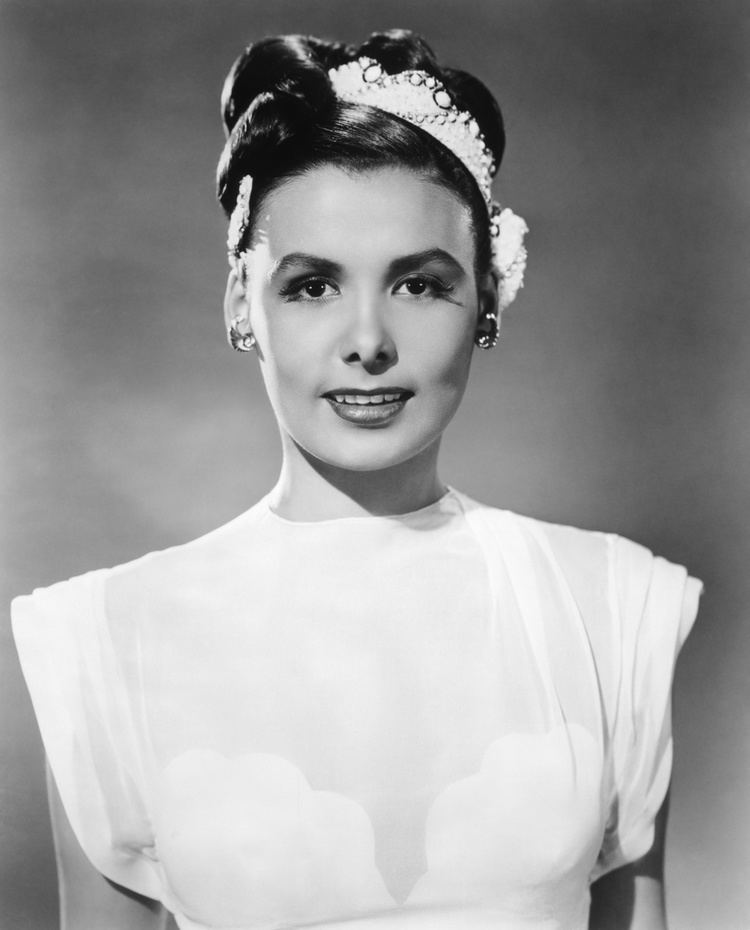 | ||
Birth name Lena Mary Calhoun Horne Born June 30, 1917Bedford–Stuyvesant, Brooklyn, New York, U.S. ( 1917-06-30 ) Occupation(s) Singer, dancer, actress, activist Died May 9, 2010, Manhattan, New York City, New York, United States Movies The Wiz, Stormy Weather, Cabin in the Sky, Till the Clouds Roll By, The Duke Is Tops Similar People Gail Buckley, Dorothy Dandridge, Eartha Kitt, Billie Holiday, Judy Garland | ||
Children Gail Buckley, Terry Jones | ||
Remembering groundbreaking jazz icon actress lena horne
Lena Mary Calhoun Horne (June 30, 1917 – May 9, 2010) was an American jazz and pop music singer, dancer, actress, and civil rights activist. Horne's career spanned over 70 years appearing in film, television, and theater. Horne joined the chorus of the Cotton Club at the age of 16 and became a nightclub performer before moving to Hollywood, where she had small parts in numerous movies, and more substantial parts in the 1943 films Cabin in the Sky and Stormy Weather. Because of the Red Scare and her political activism, Horne found herself blacklisted and unable to get work in Hollywood.
Contents
- Remembering groundbreaking jazz icon actress lena horne
- Lena Horne Stormy Weather 1943
- Early life
- Road to Hollywood
- Changes of direction
- Civil rights activism
- Personal life
- Death
- Legacy
- Film
- As featured vocalist
- References

Returning to her roots as a nightclub performer, Horne took part in the March on Washington in August 1963 and continued to work as a performer, both in nightclubs and on television while releasing well-received record albums. She announced her retirement in March 1980, but the next year starred in a one-woman show, Lena Horne: The Lady and Her Music, which ran for more than three hundred performances on Broadway. She then toured the country in the show, earning numerous awards and accolades. Horne continued recording and performing sporadically into the 1990s, disappearing from the public eye in 2000. Horne died of congestive heart failure on May 9, 2010, at the age of 92.
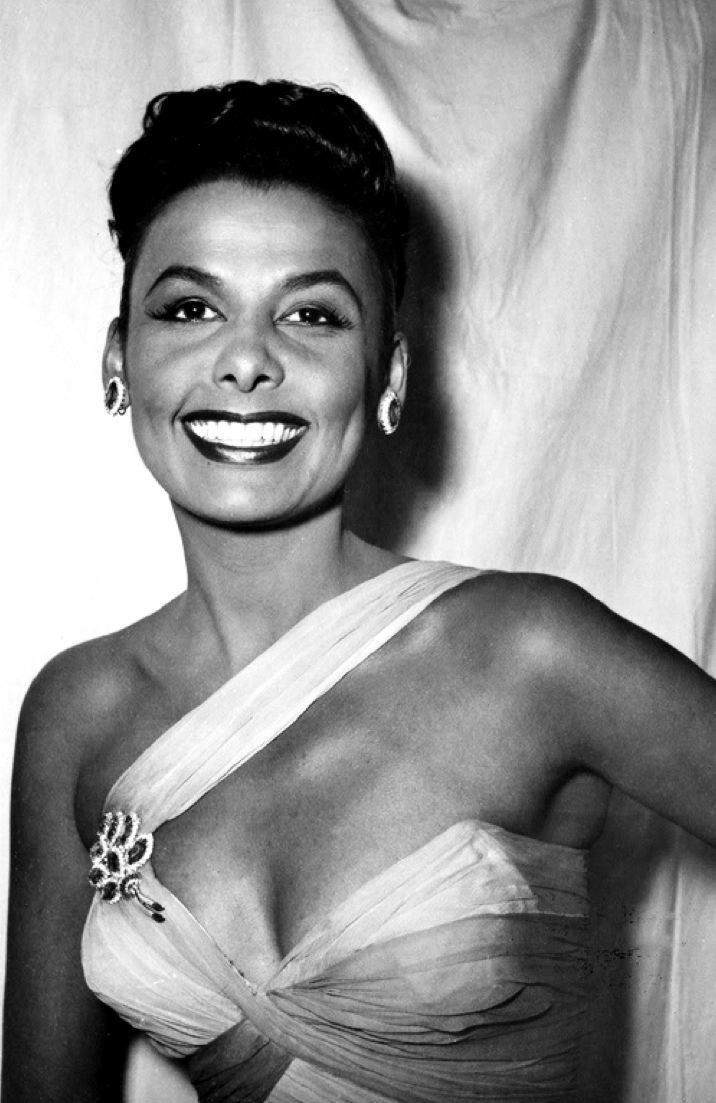
Lena Horne - Stormy Weather [1943]
Early life
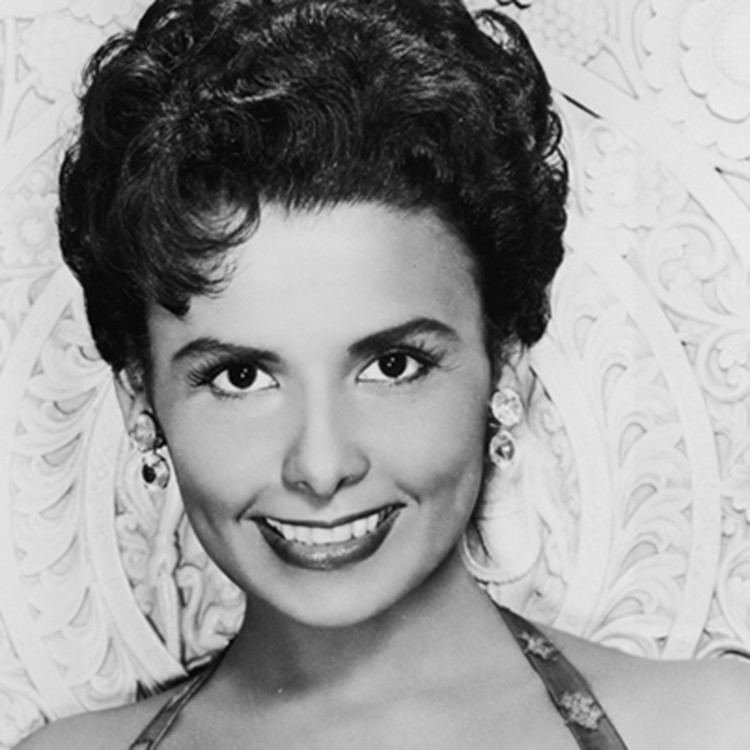
Lena Horne was born in Bedford–Stuyvesant, Brooklyn. Reportedly descended from the John C. Calhoun family, both sides of her family were a mixture of African-American, Native American, and European American descent, and belonged to the upper stratum of middle-class, well-educated people. Her father, Edwin Fletcher "Teddy" Horne, Jr. (1893–1970), a numbers kingpin in the gambling trade, left the family when she was three and moved to an upper-middle-class black community in the Hill District community of Pittsburgh, Pennsylvania. Her mother, Edna Louise Scottron (1894–1976), was a granddaughter of inventor Samuel R. Scottron; she was an actress with a black theatre troupe and traveled extensively. Edna's maternal grandmother, Amelie Louise Ashton, was a Senegalese slave. Horne was mainly raised by her grandparents, Cora Calhoun and Edwin Horne.

When Horne was five, she was sent to live in Georgia. For several years, she traveled with her mother. From 1927 to 1929, she lived with her uncle, Frank S. Horne, dean of students at Fort Valley Junior Industrial Institute (now part of Fort Valley State University) in Fort Valley, Georgia, who later served as an adviser to President Franklin Delano Roosevelt. From Fort Valley, southwest of Macon, Horne briefly moved to Atlanta with her mother; they returned to New York when Horne was 12 years old. She then attended Girls High School, an all-girls public high school in Brooklyn that has since become Boys and Girls High School; she dropped-out without earning a diploma. Aged 18, she moved to her father's home in Pittsburgh, staying in the city's Little Harlem for almost five years and learning from native Pittsburghers Billy Strayhorn and Billy Eckstine, among others.
Road to Hollywood
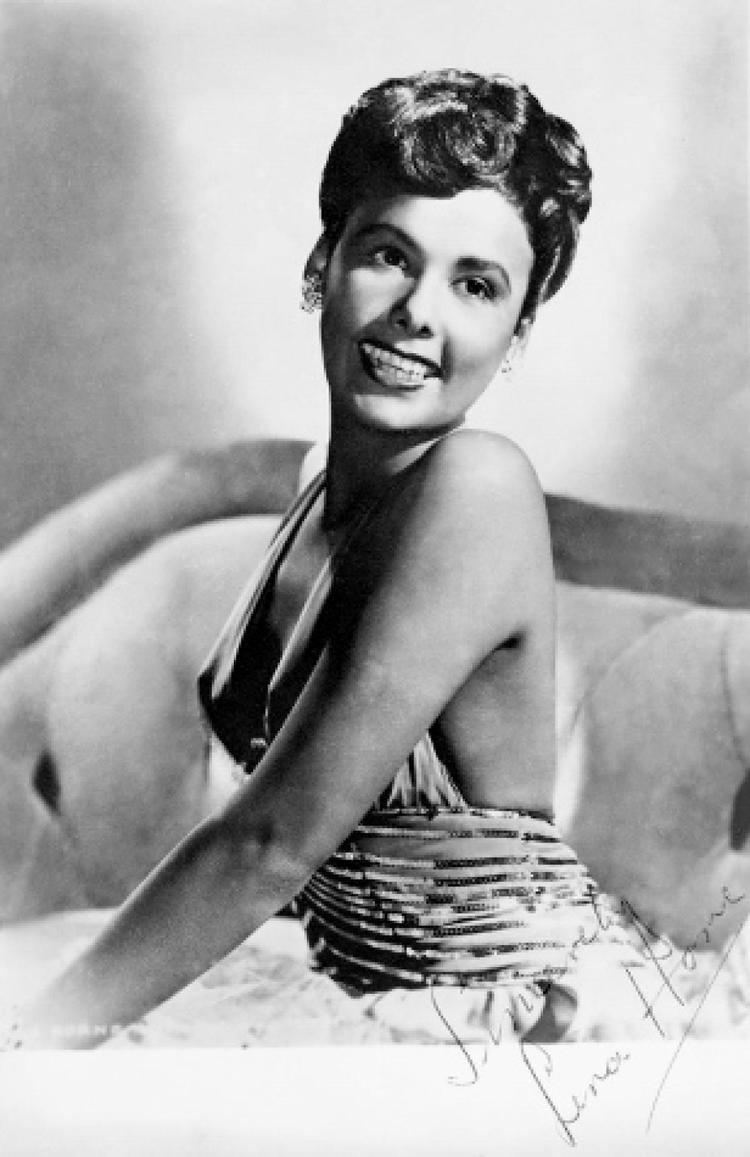
In the fall of 1933, Horne joined the chorus line of the Cotton Club in New York City. In the spring of 1934, she had a featured role in the Cotton Club Parade starring Adelaide Hall, who took Lena under her wing. A few years later, Horne joined Noble Sissle's Orchestra, with which she toured and with whom she made her first records, issued by Decca. After she separated from her first husband, Horne toured with bandleader Charlie Barnet in 1940–41, but disliked the travel and left the band to work at the Cafe Society in New York. She replaced Dinah Shore as the featured vocalist on NBC's popular jazz series The Chamber Music Society of Lower Basin Street. The show's resident maestros, Henry Levine and Paul Laval, recorded with Horne in June 1941 for RCA Victor. Horne left the show after only six months when she was hired by former Cafe Trocadero (Los Angeles) manager Felix Young to perform in a Cotton Club-style revue on the Sunset Strip in Hollywood, and was replaced by actress Betty Keene of the Keene sisters.
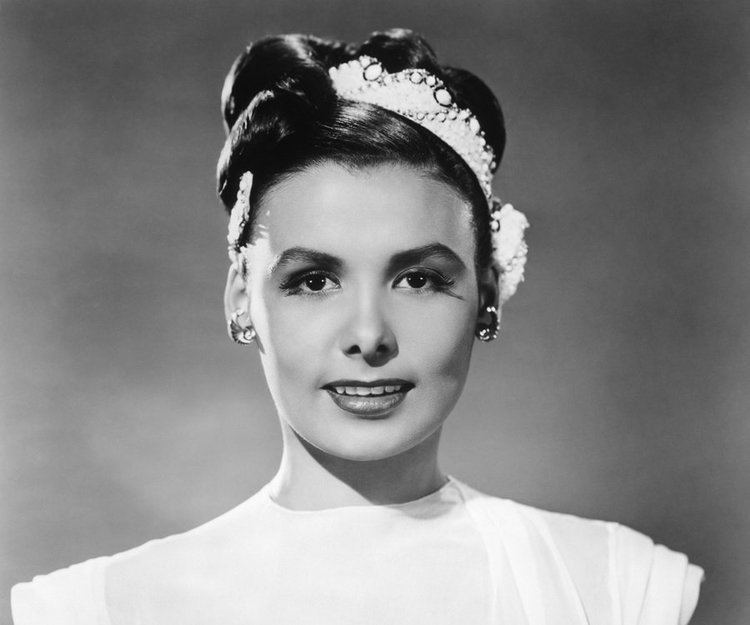
Horne already had two low-budget movies to her credit: a 1938 musical feature called The Duke is Tops (later reissued with Horne's name above the title as The Bronze Venus); and a 1941 two-reel short subject, Boogie Woogie Dream, featuring pianists Pete Johnson and Albert Ammons. Horne's songs from Boogie Woogie Dream were later released individually as soundies. Horne made her Hollywood nightclub debut at Felix Young's Little Troc on the Sunset Strip in January 1942. A few weeks later, she was signed by Metro-Goldwyn-Mayer. In November 1944, she was featured in an episode of the popular radio series Suspense, as a fictional nightclub singer, with a large speaking role along with her singing. In 1945 and 1946, she sang with Billy Eckstine's Orchestra.

She made her debut at Metro-Goldwyn-Mayer in Panama Hattie (1942) and performed the title song of Stormy Weather based loosely on the life of Adelaide Hall, (1943), which she made at 20th Century Fox, on loan from MGM. She appeared in a number of MGM musicals, most notably Cabin in the Sky (1943), but was never featured in a leading role because of her race and the fact that her films had to be re-edited for showing in cities where theaters would not show films with black performers. As a result, most of Horne's film appearances were stand-alone sequences that had no bearing on the rest of the film, so editing caused no disruption to the storyline. A notable exception was the all-black musical Cabin in the Sky, although one number from that film was cut before release because it was considered too suggestive by the censors: Horne singing "Ain't It the Truth" while taking a bubble bath. This scene and song are featured in the film That's Entertainment! III (1994) which also featured commentary from Horne on why the scene was deleted prior to the film's release. Lena Horne was the first African-American elected to serve on the Screen Actors Guild board of directors.
In Ziegfeld Follies (1946), she performed "Love" by Hugh Martin and Ralph Blane. Horne lobbied for the role of Julie LaVerne in MGM's 1951 version of Show Boat (having already played the role when a segment of Show Boat was performed in Till the Clouds Roll By) but lost the part to Ava Gardner, a personal friend in real life. Horne claimed this was due to the Production Code's ban on interracial relationships in films, but MGM sources state she was never considered for the role in the first place. In the documentary That's Entertainment! III, Horne stated that MGM executives required Gardner to practice her singing using Horne's recordings, which offended both actresses. Ultimately, Gardner's voice was overdubbed by actress Annette Warren (Smith) for the theatrical release.
Changes of direction
By the mid-1950s, Horne was disenchanted with Hollywood and increasingly focused on her nightclub career. She only made two major appearances for MGM during the 1950s: Duchess of Idaho (which was also Eleanor Powell's final film); and the 1956 musical Meet Me in Las Vegas. She was blacklisted during the 1950s for her affiliations in the 1940s with communist-backed groups. She would subsequently disavow communism. She returned to the screen three more times, playing chanteuse Claire Quintana in the 1969 film Death of a Gunfighter, Glinda in The Wiz (1978), which was directed by her then son-in-law Sidney Lumet, and co-hosting the MGM retrospective That's Entertainment! III (1994), in which she was candid about her unkind treatment by the studio.
After leaving Hollywood, Horne established herself as one of the premier nightclub performers of the post-war era. She headlined at clubs and hotels throughout the U.S., Canada, and Europe, including the Sands Hotel in Las Vegas, the Cocoanut Grove in Los Angeles, and the Waldorf-Astoria in New York. In 1957, a live album entitled, Lena Horne at the Waldorf-Astoria, became the biggest-selling record by a female artist in the history of the RCA Victor label at that time. In 1958, Horne became the first African-American woman to be nominated for a Tony Award for "Best Actress in a Musical" (for her part in the "Calypso" musical Jamaica) which, at Lena's request featured her longtime friend Adelaide Hall.
From the late 1950s through to the 1960s, Horne was a staple of TV variety shows, appearing multiple times on Perry Como's Kraft Music Hall, The Ed Sullivan Show, The Dean Martin Show, and The Bell Telephone Hour. Other programs she appeared on included The Judy Garland Show, The Hollywood Palace, and The Andy Williams Show. Besides two television specials for the BBC (later syndicated in the U.S.), Horne starred in her own U.S. television special in 1969, Monsanto Night Presents Lena Horne. During this decade, the artist Pete Hawley painted her portrait for RCA Victor, capturing the mood of her performance style.
In 1970, she co-starred with Harry Belafonte in the hour-long Harry & Lena special for ABC; in 1973, she co-starred with Tony Bennett in Tony and Lena. Horne and Bennett subsequently toured the U.S. and U.K. in a show together. In the 1976 program America Salutes Richard Rodgers, she sang a lengthy medley of Rodgers songs with Peggy Lee and Vic Damone. Horne also made several appearances on The Flip Wilson Show. Additionally, Horne played herself on television programs such as The Muppet Show, Sesame Street, and Sanford and Son in the 1970s, as well as a 1985 performance on The Cosby Show and a 1993 appearance on A Different World. In the summer of 1980, Horne, 63 years old and intent on retiring from show business, embarked on a two-month series of benefit concerts sponsored by the sorority Delta Sigma Theta. These concerts were represented as Horne's farewell tour, yet her retirement lasted less than a year.
On April 13, 1980, Horne, Luciano Pavarotti, and host Gene Kelly were all scheduled to appear at a Gala performance at the Metropolitan Opera House to salute the NY City Center's Joffrey Ballet Company. However, Pavarotti's plane was diverted over the Atlantic and he was unable to appear. James Nederlander was an invited Honored Guest and noted that only three people at the sold-out Metropolitan Opera House asked for their money back. He asked to be introduced to Lena following her performance. In May 1981, The Nederlander Organization, Michael Frazier, and Fred Walker went on to book Horne for a four-week engagement at the newly named Nederlander Theatre on West 41st Street in New York City. The show was an instant success and was extended to a full year run, garnering Horne a special Tony award, and two Grammy Awards for the cast recording of her show Lena Horne: The Lady and Her Music. The 333-performance Broadway run closed on Horne's 65th birthday, June 30, 1982. Later that same week, she performed the entire show again to record it for television broadcast and home video release. Horne began a tour a few days later at Tanglewood (Massachusetts) during the weekend of July 4, 1982. The Lady and Her Music toured 41 cities in the U.S. and Canada until June 17, 1984. It played in London for a month in August and ended its run in Stockholm, Sweden, September 14, 1984. In 1981, she received a Special Tony Award for the show, which also played to acclaim at the Adelphi Theatre in London in 1984. Despite the show's considerable success (Horne still holds the record for the longest-running solo performance in Broadway history), she did not capitalize on the renewed interest in her career by undertaking many new musical projects. A proposed 1983 joint recording project between Horne and Frank Sinatra (to be produced by Quincy Jones) was ultimately abandoned, and her sole studio recording of the decade was 1988's The Men in My Life, featuring duets with Sammy Davis Jr. and Joe Williams. In 1989, she received the Grammy Lifetime Achievement Award.
The 1990s found Horne considerably more active in the recording studio. Following her 1993 performance at a tribute to the musical legacy of her good friend Billy Strayhorn (Duke Ellington's longtime collaborator), she decided to record an album composed largely of Strayhorn's and Ellington's songs the following year, We'll Be Together Again. To coincide with the release of the album, Horne made what would be her final concert performances at New York's Supper Club and Carnegie Hall. That same year, Horne also lent her vocals to a recording of "Embraceable You" on Sinatra's Duets II album. Though the album was largely derided by critics, the Sinatra-Horne pairing was generally regarded as its highlight. In 1995, a "live" album capturing her Supper Club performance was released (subsequently winning a Grammy Award for Best Jazz Vocal Album). In 1998, Horne released another studio album, entitled Being Myself. Thereafter, Horne retired from performing and largely retreated from public view, though she did return to the recording studio in 2000 to contribute vocal tracks on Simon Rattle's Classic Ellington album.
Civil rights activism
Horne was long involved with the Civil Rights Movement. In 1941, she sang at Cafe Society and worked with Paul Robeson. During World War II, when entertaining the troops for the USO, she refused to perform "for segregated audiences or for groups in which German POWs were seated in front of African American servicemen", according to her Kennedy Center biography. Because the U.S. Army refused to allow integrated audiences, she staged her show for a mixed audience of black U.S. soldiers and white German POWs. Seeing the black soldiers had been forced to sit in the back seats, she walked off the stage to the first row where the black troops were seated and performed with the Germans behind her. She was at an NAACP rally with Medgar Evers in Jackson, Mississippi, the weekend before Evers was assassinated. She also met President John F. Kennedy at the White House two days before he was assassinated. She was at the March on Washington and spoke and performed on behalf of the NAACP, SNCC, and the National Council of Negro Women. She also worked with Eleanor Roosevelt to pass anti-lynching laws. Tom Lehrer mentions her in his song "National Brotherhood Week" in the line "Lena Horne and Sheriff Clark are dancing cheek to cheek" referring (wryly) to her and to Sheriff Jim Clark, of Selma, Alabama, who was responsible for a violent attack on civil rights marchers in 1965. In 1983, the NAACP awarded her the Spingarn Medal.
Horne was a registered Democrat and on November 20, 1963, she, along with Democratic National Committee (DNC) Chairman John Bailey, Carol Lawrence, Richard Adler, Sidney Salomon, Vice-Chairwoman of the DNC Margaret B. Price, and Secretary of the DNC Dorothy Vredenburgh Bush, visited John F. Kennedy at The White House, two days prior to his assassination.
Personal life
Horne married Louis Jordan Jones in January 1937 in Pittsburgh. On December 21, 1937, their daughter, Gail (later known as Gail Lumet Buckley, a writer) was born. They had a son, Edwin Jones (February 7, 1940 – September 12, 1970) who died of kidney disease. Horne and Jones separated in 1940 and divorced in 1944. Horne's second marriage was to Lennie Hayton, who was Music Director and one of the premier musical conductors and arrangers at MGM, in December 1947 in Paris. They separated in the early 1960s, but never divorced; he died in 1971. In her as-told-to autobiography Lena by Richard Schickel, Horne recounts the enormous pressures she and her husband faced as an interracial couple. She later admitted in an interview in Ebony (May 1980) that she had married Hayton to advance her career and cross the "color-line" in show business.
Horne also had a long and close relationship with Billy Strayhorn, whom she said she would have married if he had been heterosexual. He was also an important professional mentor to her. Screenwriter Jenny Lumet, known for her award-winning screenplay Rachel Getting Married, is Horne's granddaughter, the daughter of filmmaker Sidney Lumet and Horne's daughter Gail. Her other grandchildren include Gail's other daughter, Amy Lumet, and her son's four children, Thomas, William, Samadhi, and Lena. Her great-grandchildren include the actor Jake Cannavale.
Death
Horne died on May 9, 2010. Her funeral took place at St. Ignatius Loyola Church on Park Avenue in New York. Thousands gathered and attendees included Leontyne Price, Dionne Warwick, Liza Minnelli, Jessye Norman, Chita Rivera, Cicely Tyson, Diahann Carroll, Leslie Uggams, Lauren Bacall, Robert Osborne, Audra McDonald, and Vanessa Williams. After the service, her remains were cremated.
Legacy
In 2003, ABC announced that Janet Jackson would star as Horne in a television biographical film. In the weeks following Jackson's "wardrobe malfunction" debacle during the 2004 Super Bowl, however, Variety reported that Horne had demanded Jackson be dropped from the project. "ABC executives resisted Horne's demand", according to the Associated Press report, "but Jackson representatives told the trade newspaper that she left willingly after Horne and her daughter, Gail Lumet Buckley, asked that she not take part." Oprah Winfrey stated to Alicia Keys during a 2005 interview on The Oprah Winfrey Show that she might possibly consider producing the biopic herself, casting Keys as Horne.
In January 2005, Blue Note Records, her label for more than a decade, announced that "the finishing touches have been put on a collection of rare and unreleased recordings by the legendary Horne made during her time on Blue Note." Remixed by her longtime producer Rodney Jones, the recordings featured Horne in remarkably secure voice for a woman of her years, and include versions of such signature songs as "Something to Live For", "Chelsea Bridge", and "Stormy Weather". The album, originally entitled Soul but renamed Seasons of a Life, was released on January 24, 2006. In 2007, Horne was portrayed by Leslie Uggams as the older Lena and Nikki Crawford as the younger Lena in the stage musical Stormy Weather staged at the Pasadena Playhouse in California (January to March 2009). In 2011, Horne was also portrayed by actress Ryan Jillian in a one-woman show titled Notes from A Horne staged at the Susan Batson studio in New York City, from November 2011 to February 2012. The 83rd Academy Awards presented a tribute to Horne by actress Halle Berry at the ceremony held February 27, 2011.
Film
As featured vocalist
Issued in 1936 on 78rpm 10" vinyl by Decca Records on Decca 778B. Credits Noble Sissle and his Orchestra, Lena Horne was credited as Leana Horne for this recording. Recorded on November 3, 1936, in New York.
